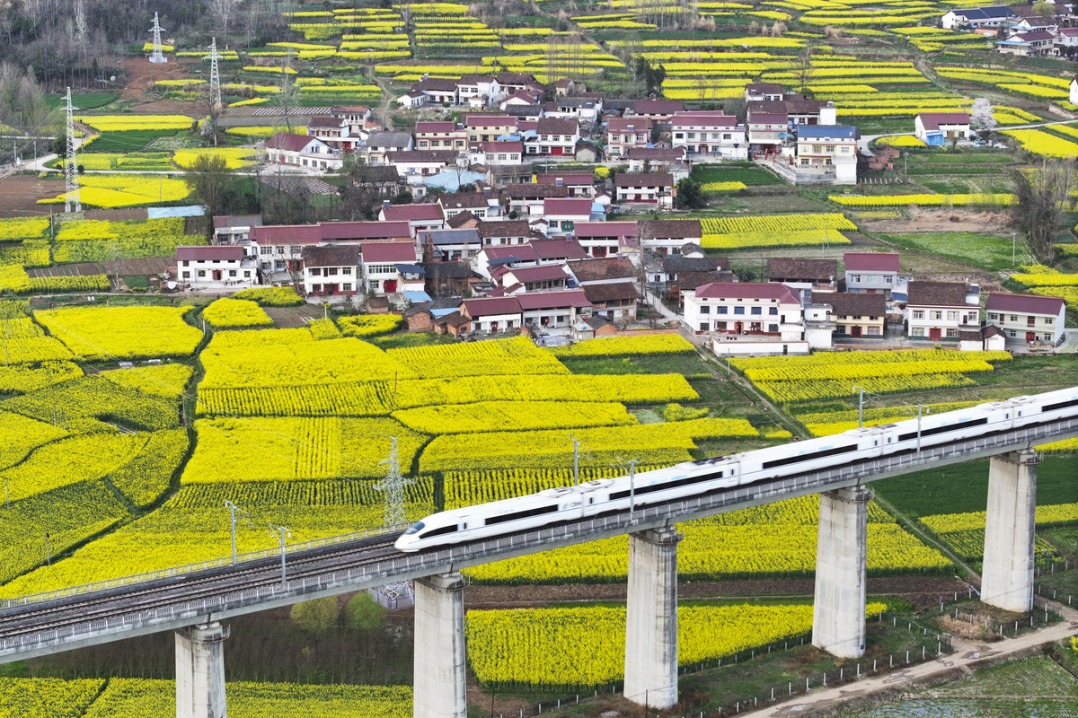Shenzhen must bolster innovation drive
By Fu Zhengping | CHINA DAILY | Updated: 2020-09-03 08:10

Since being made the first special economic zone (SEZ) in China on Aug 26, 1980, Shenzhen has grown from a small fishing village into a global metropolis, which houses a number of Fortune 500 enterprises such as Huawei, Tencent, Ping An Insurance and China Merchants Bank.
With its GDP reaching 2.6 trillion yuan ($379 billion) last year, Shenzhen has created another miracle. Yet the city also faces new challenges.
Since reform and opening-up are the foundation of its development and prosperity and since it has been designated the pilot demonstration zone for socialism with Chinese characteristics, Shenzhen needs to take the lead in perfecting the socialist market economic system, expediting factor market reform and establishing a new, open economic system as China enters a new era of comprehensive and deepened reform.
The opening up of its service industry has made Shenzhen the bridgehead for further opening up the Chinese economy to the outside world. The central government decided to establish the Shenzhen-Hong Kong Modern Service Industry Cooperation Zone in Qianhai, Shenzhen, in 2010, and approved Qianhai as a pilot free trade zone (FTZ) in 2015, in order to turn Shenzhen into a world-class free trade hub and free port. And with institutional innovation as a principal goal, Shenzhen is devoted to making Qianhai into a gateway for further opening-up.
Qianhai is located in Nanshan district of Shenzhen, separated only by a mountain from the Shekou Industrial Zone, which was the pioneer of reform in the 1980s. Qianhai's main task is to open up its service industry to the Hong Kong Special Administrative Region, learn from the advanced management experience of Hong Kong's service sector, and match its institutions and rules with those of Hong Kong. Given that the mode of cooperation between Hong Kong and Shenzhen has changed from "front shop and back factory" in the 1980s to horizontal cooperation, attracting Hong Kong's service industries to invest and work in Qianhai is essential for the economic integration of the two cities.
At present, the Qianhai pilot FTZ is home to 12,409 Hong Kong-funded enterprises, with a registered capital of more than 1.3 trillion yuan, and the world's top 500 enterprises have invested in and/or established over 300 enterprises in Qianhai. Qianhai has also rolled out 520 institutional innovations, 50 of which have been replicated and promoted throughout the country.
According to a report of the Institute of Free Trade Zones, Sun Yat-sen University, Qianhai's institutional innovation index was ranked top in China in 2018 and 2019. It also ranked top among the 18 FTZs in China in terms of transformation of government functions, legal system innovation, and trade and investment facilitation. As an SEZ within an SEZ, Qianhai, with the strong support of the State, will play a vital role in the opening up of China's service industry to the world, and help Shenzhen become a global benchmark city, and a hub for talents and businesses from around the world.
As the pivotal city in the Guangdong-Hong Kong-Macao Greater Bay Area, Shenzhen will play a key role in exploring regional coordinated development. And as an SEZ and the country's pilot demonstration area for socialism with Chinese characteristics, Shenzhen will become the core driver of the Greater Bay Area, especially in promoting integrated development with Hong Kong, as well as with Dongguan, Huizhou, Shanwei and other cities in Guangdong province. The city will also explore interconnectivity with other cities in public services, and administration and modern management practices.
Thanks to their excellent connectivity via high-speed railways, expressways and intercity railways, Shenzhen, Hong Kong and Guangzhou, all three international central cities, will be integrated into a world-class city cluster that stands out in the East.
But since Shenzhen now faces the problem of shortage of land and loss of demographic dividends, it needs to embark on the road to innovation-driven and high-quality development. And the central government's decision-in August 2019 last year-to designate Shenzhen as a demonstration zone for socialism with Chinese characteristics is aimed precisely at transforming the city into a model for innovation-driven, high-quality growth.
Also, China's fourth comprehensive national scientific innovation center is due to be built in Shenzhen. To speed up the development and marketing of medicines, the State has also approved the establishment of a national drug evaluation center in Shenzhen. A number of research universities, too, have been established in the city, including the Shenzhen branches of Sun Yat-sen University and the Chinese University of Hong Kong. And the University of Chinese Academy of Sciences, one of China's top research universities, has opened a branch in Guangming District of Shenzhen.
All factors indicate the digital economy will become a new driver for Shenzhen's growth. Aside from Shenzhen being selected as a pilot city for State-approved legal digital currency, Tencent's WeBank in Shenzhen will become the world's leading digital bank operating without a branch. Shenzhen is also one of the world's leading entrepreneurial and inclusive cities for immigrants. No wonder new ideas, new concepts and new products can be easily accepted and disseminated in Shenzhen.
And the central government's recent approval of the Shenzhen Stock Exchange's pilot registration system for the Growth Enterprise Board will add vitality to the entrepreneurial city, giving rise to more entrepreneurs and rising stars in global wealth rankings.
The views don't necessarily reflect those of China Daily. The author is deputy director of the Institute of Guangdong, Hong Kong and Macao Development Studies, Sun Yat-sen University.
























